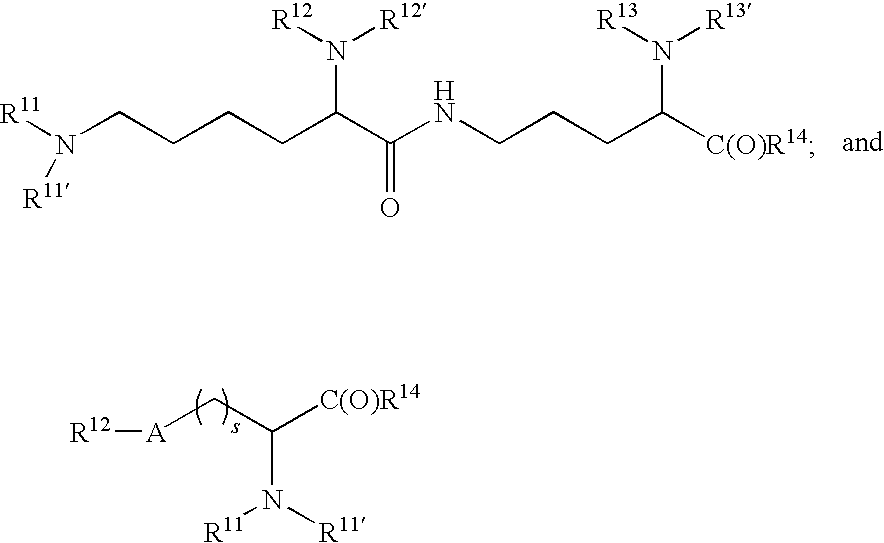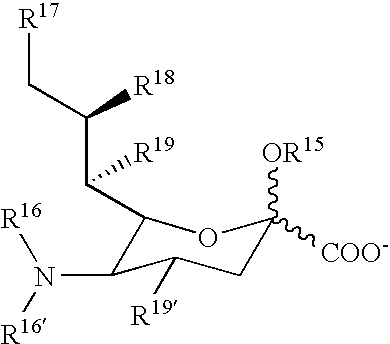Branched water-soluble polymers and their conjugates
a water-soluble polymer and branched technology, applied in the field ofbranched water-soluble polymers and conjugates, can solve the problems of unstable reaction products, easy hydrolysis, and limited francisco method,
- Summary
- Abstract
- Description
- Claims
- Application Information
AI Technical Summary
Benefits of technology
Problems solved by technology
Method used
Image
Examples
example 1
The Preparation of Mono-Dispersed PEGs and their Activated Forms
[0333]Mono-dispersed or single molecular weight PEGs are prepared as shown below. By adjusting the size of the fragments generated, any size PEG is prepared. The diols are then mono-terminated via alkylation and activated for conjugation to a biological moiety such as a protein, sugar, lipid, or nucleotide.
[0334]Leaving groups can be attached to the primary PEG subunit in order to create an activated primary PEG as shown below. In this reaction, Q can be any leaving group that is compatible with the chemistry of this invention. Exemplary leaving groups include halides, tresylates, tosylates and mesylates.
[0335]After creating the activated primary PEG, the compound is reacted with primary PEG subunits as shown below. The product is a first generation PEG extension.
[0336]The second generation PEG extension is created in a similar manner as the first generation.
[0337]The third generation PEG extension is created as shown b...
example 2
[0344]There is no requirement that the activated mono-dispersed PEG must have the same number of PEG subunits as the extension molecules to which it reacts. In an exemplary embodiment, the activated mono-dispersed PEG has a larger number of PEG subunits than the extension molecule to which it reacts. In another exemplary embodiment shown below, the activated mono-dispersed PEG has a smaller number of PEG subunits than the extension molecule to which it reacts.
[0345]The termination process for these molecules is similar to the process described in Example 1.
example 3
[0346]An excess of the activated PEG subunit can be added to create the mono-dispersed PEG shown below:
[0347]By varying the ratio of reactants, the based used, temperature, solvent, and concentration, one can adjust the reaction to give the predominant size (n) desired.
[0348]This approach provides a simple, fast, efficient way to prepare mono-dispersed PEGs of any size. Purification is simplified by this approach because of the differences in size (and therefore physicochemical characteristics) of the mono-dispersed PEGs. This allows the use of simple, standard purification techniques such as silica gel, reverse phase cellulose, membrane filtration (nanofiltration and ultrafiltration). The purified PEG diols are then derivatized into any functional form that is desired.
PUM
| Property | Measurement | Unit |
|---|---|---|
| water-soluble | aaaaa | aaaaa |
| hydrophilic | aaaaa | aaaaa |
| molecular weight | aaaaa | aaaaa |
Abstract
Description
Claims
Application Information
 Login to View More
Login to View More - R&D
- Intellectual Property
- Life Sciences
- Materials
- Tech Scout
- Unparalleled Data Quality
- Higher Quality Content
- 60% Fewer Hallucinations
Browse by: Latest US Patents, China's latest patents, Technical Efficacy Thesaurus, Application Domain, Technology Topic, Popular Technical Reports.
© 2025 PatSnap. All rights reserved.Legal|Privacy policy|Modern Slavery Act Transparency Statement|Sitemap|About US| Contact US: help@patsnap.com



